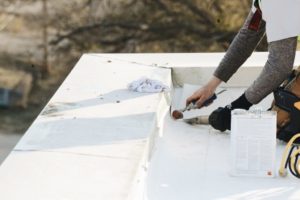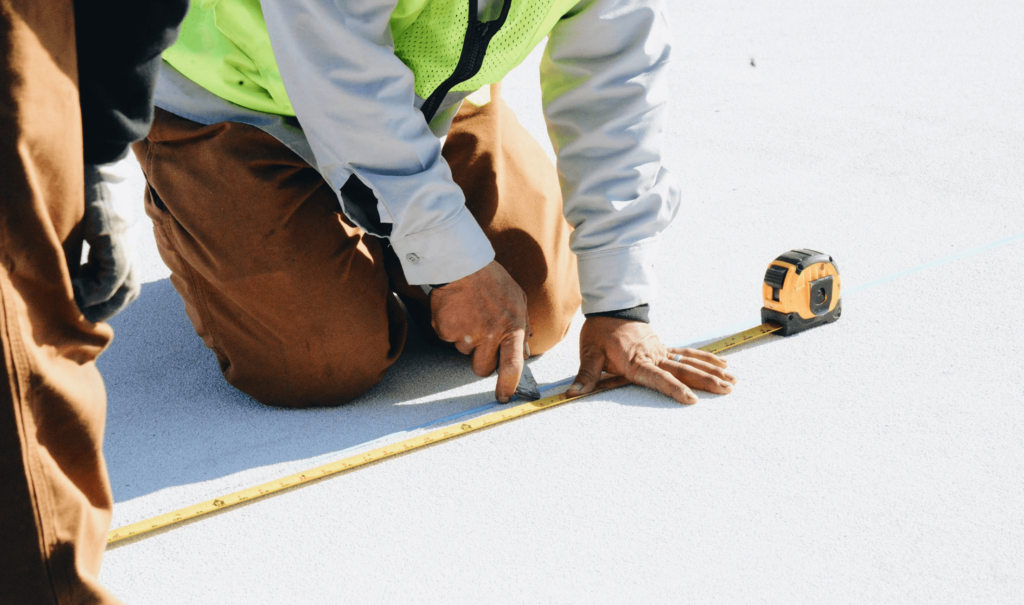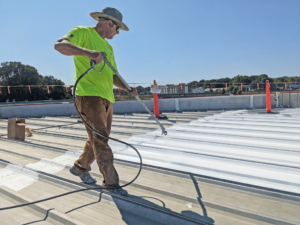Commercial Roof Maintenance Is Important
A properly installed commercial roof system is key to any building or structure. Sadly, the importance of roof maintenance is not typically respected, and roof leaks happen and can cause major issues for the building owner costing thousands of dollars or more. To avoid these situations, it is imperative to have a proper roof maintenance program. Before we continue, let me say that it is best practice to consult the roofing contractor who installed your roof to see if they have any regular maintenance programs or suggestions. By using a certified contractor, you can be assured that you will not void your warranty and will receive the best possible service. Doing any work on a roof can be extremely dangerous and could also void manufacturers’ and contractors’ warranties. Here are some maintenance tips that you should familiarize yourself with in order save money, maintain curb appeal and maintain your peace of mind.
1. Regular Inspections
Roofs of commercial buildings should be professionally inspected at least twice per year. It is typical to have your roofing contractor check for any cracks, blisters, leaks, rips, and water below the surface of the system. Approximately 95 percent of leaks occur at “flashing points” or areas where there is a penetration in the roof system, e.g., skylights, chimneys, vents, parapets. If you do find a leak it is vital to get it fixed immediately. Ignoring it will only lead to it expanding, becoming a major issue, and costing exponentially more in the long run. Other times to inspect your roof would be right after a heavy storm, where it could have received wind or hail damage, and just before winter. While inspecting the roof it is also important to clear any debris, especially in the gutters and drains. When it comes to cleanliness, it is also recommended to have your roof cleaned twice a year.

2. Maintenance Is Important
The importance of roof maintenance doesn’t stop with the system itself. Loose material can clog drains, leading to standing water, algae and bacteria growth, and subsequently rapid roof deterioration. These problems, if unresolved will compromise the roof and shorten its lifespan. How do you clean a roof? First, clear the drains and remove any large debris. Depending on the roof, contractors use a mild detergent and scrub the membrane with manufacturer approved pads. This typically removes most bacteria, mold, and filth. After the scrubbing is complete the cleaners may use a light (2000 psi or less) pressure washer to spray off any remaining soap or debris. A clean roof maximizes reflectivity (light membranes) or its associated energy absorption benefits (dark membranes) saving the owner money on utilities and allowing the roof to function as it was originally intended.
3. Equipment Inspection
Another item to look for on your roof maintenance checklist is that your rooftop equipment is functioning properly. This could be a fan, vent pipes, plumbing, HVAC equipment… basically anything on the roof. Heating and cooling equipment has become notorious for causing major roof issues and is key when prioritizing the importance of roof maintenance. Just like debris, a leaky air conditioner can cause ponding water and have the same associated issues. If there is an issue with mechanical equipment on the roof contact the appropriate technicians and have it fixed promptly.
4. Roofing Maintenance Best Practices
Once inspected, and outside of regular maintenance, it is important to minimize foot traffic. Walking on a roof is fine, in most applications, but consistent traffic can accelerate the degeneration of a system by adding unnecessary pressure. Aging roofs are susceptible to rips and tears due to the weathering of the membrane and the decomposition of the insulation and cover board. Work with your contractor to keep maintenance records and you will benefit by maximizing the life of your roof.
5. Roof Lifespan Extension Options
The importance of roof maintenance is key to extending the life of your roof. If you’ve maintained it properly, you may be able to extend the life by applying a coating. There are 4 primary types of roof coatings: acrylic, silicone, polyurethane (aliphatic), and fluid-applied rubber. Acrylic coatings are economical and provide excellent reflectivity but are susceptible to weathering, more so than their counterparts. Silicone coatings are highly elastic and have become popular due to their ability to withstand ponding water. They also provide excellent UV protection and can resist oxidation and bacteria growth. The main drawback to this type of coating is attributed to its higher cost and its ability to get dirty and lose reflectivity over time.
Polyurethane coatings are an excellent option as they are strong, durable and provide excellent reflectivity. There are two types of polyurethane coatings. Aromatic and Aliphatic. Aromatic is used as the base layer since it is extremely durable but not at all resistant to UV or reflective. Aliphatic coating is then the topcoat, since it is UV stable, stays clean, and can hold its color well. The last type we’ll talk about is the fluid-applied asphaltic rubber membrane. This is a system where cold-process asphaltic rubber material is mixed with a highly-refined asphalt and emulsified. This gives the resulting coating elastic properties and excellent water proofing. It also gives the owner a seamless, and monolithic membrane that instantly waterproofs the roof.
Get Your Roof Inspected
If you think your roof isn’t being properly maintained, or just want the peace of mind of a FRE roof inspection, contact JR & Co. today. We will get on your roof and give you a complete report at no cost to you! We also have maintenance programs that can help you maintain one roof or one hundred.

